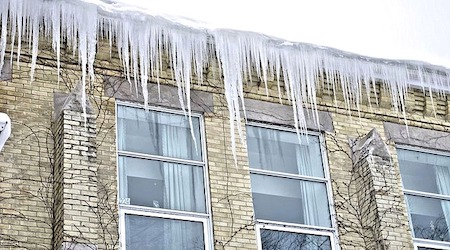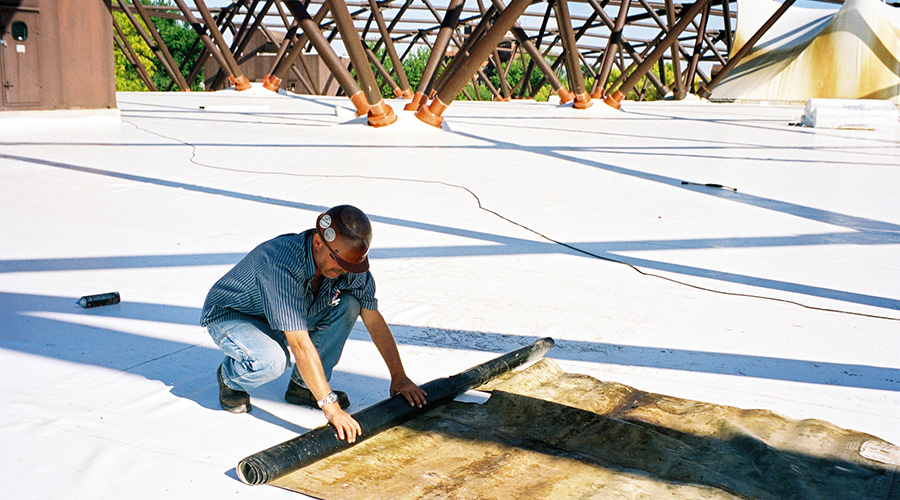Winter Maintenance Considerations for Steep-Sloped Roofing
Take every possible precaution to prevent ice dams on steep-slope roofing. Not only can they cause gutters to collapse, they can also allow water intrusion into a building when they melt.
Winter weather can also have a negative impact on steep-slope roof systems. The most common defect is back-up of accumulated snow or ice (known as ice dams) at perimeter walls and gutters. Once the ice dams start to melt, they can enter the structure from openings at fascias and eaves. The fascia panels should be inspected for openings at joints and for separation from the substrate. The ICC building code requires application of eaves flashing material a minimum of three feet upslope from the perimeter. This material is typically a higher mil thickness than a standard underlayment and it serves as a flashing material to eliminate moisture intrusion from ice dams that find their way under the shingles. The eaves flashing material must be fully adhered to the substrate – primarily at the perimeter edge.
The accumulated weight of ice dams can also damage exterior gutters by deflection and collapse.
Best practice is to ensure fascia and eaves flashing materials are in proper working condition. In extensive snow/ice events that create significant ice dams, it may be advisable to hire a local roofing contractor to properly remove the ice dams.
As we plow through another winter, we should provide as much care to the roof system as we do to other building components. Remember that all of the snow and ice present in the parking lot is also present on the roof. The roof surface experiences greater accumulation, however, because the snow and ice are not removed from the roof as they are in the parking lot. To care for the roof system in the winter months, facility managers should develop a roof maintenance plan that includes the preceding best practices. A prepared winter roof management plan that is properly executed before, during, and after winter storm events will eliminate costly repairs and interior down time associated with roof damage. An ounce of snow and ice prevention can equal a full winter of successful roof service.
John D’Annunzio (john_paragon@ameritech.net), president of Paragon Consultants and Paragon Roofing Technology, Inc., has more than 20 years experience as a construction consultant specializing in roofing and waterproofing materials application and field performance. He has written four books about roofing.
Related Topics:














